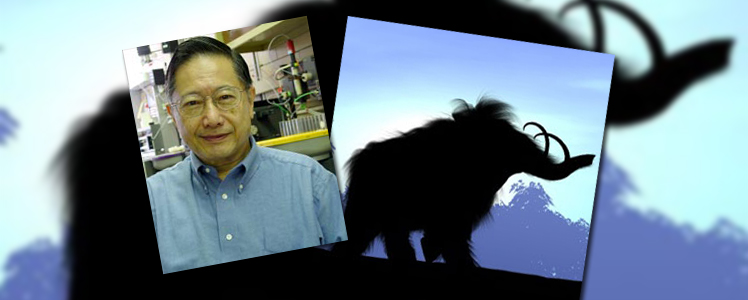Monday, May 3, 2010

Biologists Breathe New Life Into Ancient Mammoth Blood
Discovery Made Possible, in Part, by Research From Carnegie Mellon's Chien Ho
MANITOBA, Canada-A team of international researchers has "resurrected" authentic woolly mammoth hemoglobin - the blood protein responsible for delivering oxygen from the lungs to the tissues. The research has discovered special evolutionary adaptations that allowed the iconic Ice Age creatures to cool down their extremities in harsh Arctic conditions and minimize costly heat loss.
"We've managed to analyze living attributes of an animal that hasn't existed for thousands of years," says team leader Kevin Campbell of the University of Manitoba. "This is quite amazing, given that biochemical features do not fossilize."
"It has been remarkable to bring a complex protein from an extinct species back to life and discover important changes not found in any living species," adds collaborator Alan Cooper, director of the Australian Centre for Ancient DNA at the University of Adelaide. "This is true paleobiology."
Writing today in the journal Nature Genetics, the team describes sequencing hemoglobin genes from the DNA of three permafrost-preserved Siberian mammoths that lived between 25,000 and 43,000 years ago.
The genetic codes were sent to the Carnegie Mellon University lab of Chien Ho. Ho, a professor of biological sciences, has been studying hemoglobin and blood substitutes for more than 20 years and has developed techniques for creating genetically engineered hemoglobins. Using recombinant DNA methods, Ho and his colleague, Tong-Jian Shen, were able to convert a plasmid containing the genetic information from Asian elephant hemoglobin into one identical to that of a woolly mammoth. The plasmids were inserted into modern-day E. coli bacteria, which then faithfully manufactured the mammoth protein.
"This is a very powerful way to study evolution," Ho said.
"The resulting hemoglobin molecules are no different than ‘going back in time' and taking a blood sample from a real mammoth," explains Campbell.
The team used structural modeling and a battery of modern scientific tests to uncover unique molecular and biochemical properties that helped mammoths to withstand extreme environmental cold.
"This is the first time we've been able to study biological processes of an extinct animal in precisely the same way we would for living species," Campbell adds.
Team member Roy Weber at the University of Aarhus, Denmark, tested the "revived" mammoth proteins and confirmed that three highly unusual changes in the hemoglobin sequence allowed mammoth blood to deliver oxygen to cells even at very low temperatures, something living elephant blood is unable to do. This indicates that mammoths, which initially evolved in tropical Africa, developed a natural adaptation to the harsh Arctic environment.
"This is one piece of the puzzle as to how these animals moved into and survived the extreme conditions of the Arctic," says Campbell. "Our approach opens the way to understand how, at the molecular level, extinct species adapted to paleoenvironments that are no longer present on Earth."
###
Media Contacts:
University of Manitoba
Chris Rutkowski
204-474-9514
Carnegie Mellon University
Jocelyn Duffy
jhduffy@andrew.cmu.edu
412-963-7274
Pittsburgh Tribune Review Article
Pittsburgh Post Gazette Article